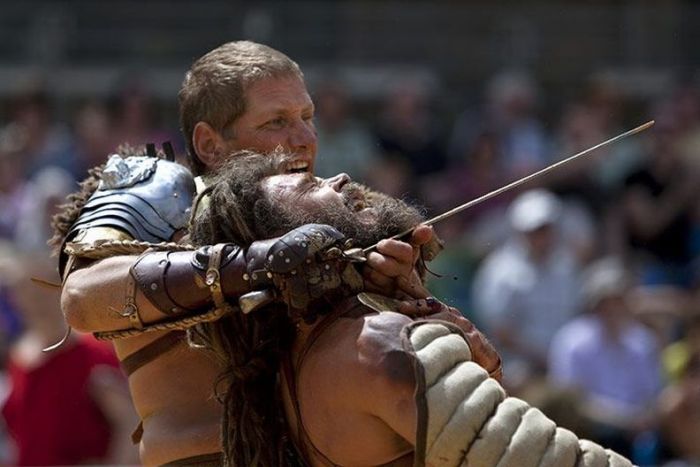|
|
Gladiator Fighting, London, United Kingdom
|
Many gladiatorial games were given in that year, some unimportant, one noteworthy beyond the rest — that of Titus Flamininus which he gave to commemorate the death of his father, which lasted four days, and was accompanied by a public distribution of meats, a banquet, and scenic performances. The climax of the show which was big for the time was that in three days seventy four gladiators fought.
In 105 BCE, the ruling consuls offered Rome its first taste of state-sponsored "barbarian combat" demonstrated by gladiators from Capua, as part of a training program for the military. It proved immensely popular. The ludi (state games), sponsored by the ruling elite and dedicated to a deity such as Jupiter, a divine or heroic ancestor (and later, during the Imperium, the well-being and numen of the emperor), could now compete with privately funded munera for popular support.
• Peak
By the closing years of the politically and socially unstable Late Republic, gladiator games provided their sponsors with extravagantly expensive but effective opportunities for self-promotion while offering cheap, exciting entertainment to their clients. Gladiators became big business for trainers and owners, for politicians on the make and those who had reached the top. A politically ambitious privatus (private citizen) might postpone his deceased father's munus to the election season, when a generous show might drum up votes; those in power and those seeking it needed the support of the plebians and their tribunes, whose votes might be won with an exceptionally spectacular show, sometimes even the mere promise of one. Sulla, during his term as praetor, showed his usual acumen in breaking his own sumptuary laws to give the most lavish munus yet seen in Rome, on occasion of his wife's funeral.
|
|









